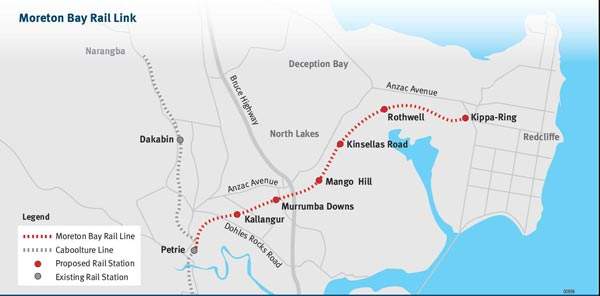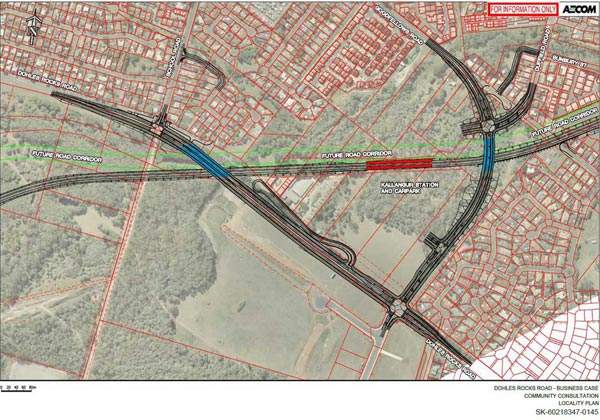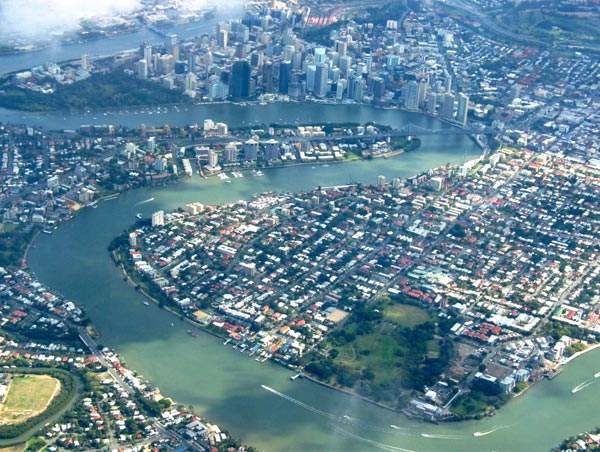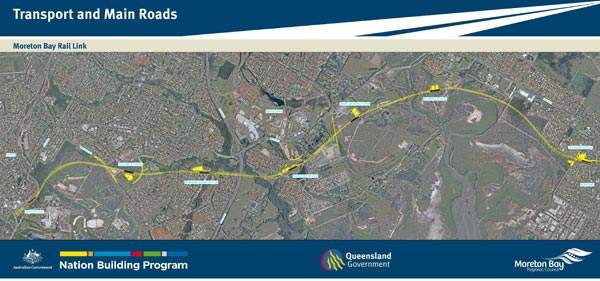The Redcliffe Peninsula Line (formerly known as Moreton Bay Rail Link) is a 12.6km double-track rail line built between Petrie and Kippa-Ring in the Moreton Bay region of Queensland, Australia. The line is a part of a $1.2bn project being jointly developed by the Australian Government ($742m), Queensland Government ($300m) and Moreton Bay Regional Council ($105m).
The line was opened in October 2016. The project employed 800 personnel during construction.
The heavy rail project provides a safe and reliable transport network, eases congestion, and reduces travel time into Brisbane’s central business district (CBD).
The travel time from Kippa Ring to Brisbane’s CBD is expected to be 45 minutes, while the same takes more than one hour by car. Nearly 6,000 people are expected to use the service daily.
The project is also expected to reduce greenhouse gas emissions and attract investments into the area. Each full train is expected to take 600 vehicles off the road. The project is expected to create 8,430 jobs during its life.
Moreton Bay region’s railway line project details and importance
The Moreton Bay region is a rapidly growing area of Queensland, with a population of more than 375,000. As the district continues to grow, the population is estimated to exceed 500,000 by 2031.
The region does not have many employment options, forcing nearly 54% of the population to commute out of the area. Most of the people (83%) commute using private transportation. As a result, there is congestion on the majority of the roads in the area.
In addition, the region is not served by any public transportation system making the population heavily dependent on private vehicles. As its population continues to grow, congestion and greenhouse gas emissions in Queensland are expected to increase rapidly.
To address this problem, the Queensland government carried out a series of investigations between 1978 and 1979 to develop a public transport corridor between Petrie and Kippa-Ring. The corridor is expected to provide an alternative route to private vehicles and enable sustainable management of population increase.
The project enables residents to reach major employment centres within and near the Moreton Bay region. It also enables the existing road network, especially the Bruce Highway, to be used for journeys which cannot be taken through public transport.
An impact assessment study (IAS) was carried out in 1999, and a final IAS was issued in October 2003. Both studies were subject to numerous community consultation activities and included several changes.
The final IAS determined the alignment of the railway line and the location of six new stations. Heavy rail was chosen as the most effective solution to meet the transport demands of the region.
Most of the land required for the project was already acquired in the 1970s. Halcrow was contracted to conduct demand forecasts for the project in November 2010. Geotechnical works for the rail corridor commenced in May 2011 and were completed in August 2011.
In January 2012, the Queensland government invited bids for building road bridges for the project.
Infrastructure of Queensland’s 12.6km double-track Redcliffe Peninsula Line
The project included the construction of six new rail stations at Kallangur, Murrumba Downs, Mango Hill, Kinsellas Road, Rothwell and Kippa-Ring.
All stations include 175m-long side platforms, walkways, ticket offices, waiting facilities, park and ride facilities, security cameras and bus / train interchange facilities.
New overpasses over the Goodfellows and Dohles Rocks Road were built to connect the Kallangur station. The Murrumba Downs and Mango Hill stations are connected through a new rail bridge built over the Bruce Highway. A new overpass was built on the Freshwater Creek Road.
Construction of the Kinsellas Road station included a new overpass over Kinsellas Road East to cross the rail line. Petrie station was also upgraded to service the new rail line. The existing parking spaces at the station were relocated and expanded.
International design company Hassell has been awarded the contract to design all six stations.







